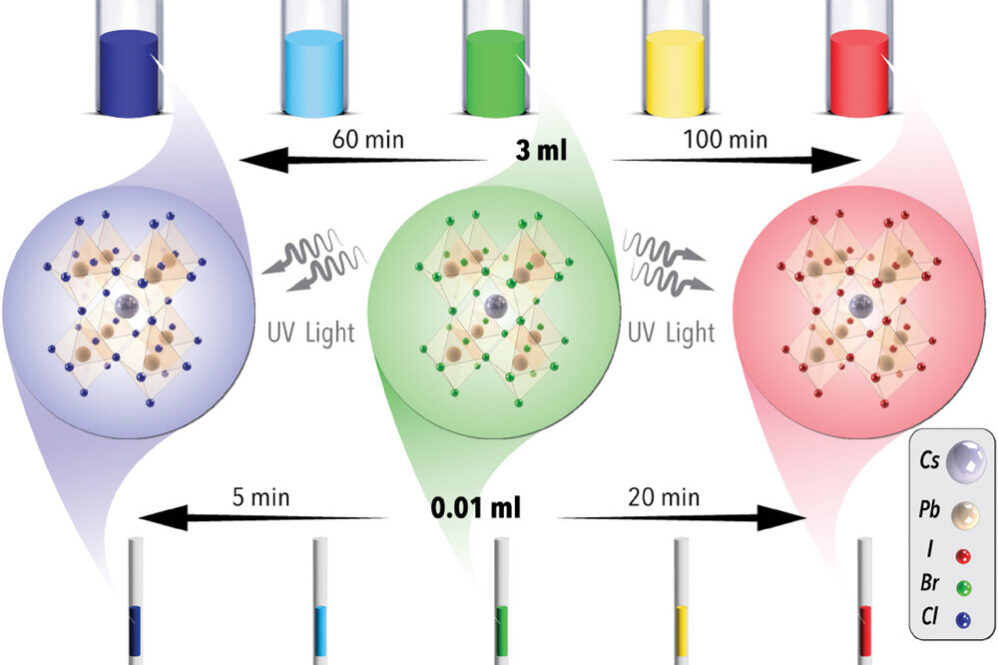Scientists at North Carolina State University have developed an innovative method to fine-tune quantum dots using light, marking a significant advancement over traditional chemical approaches. Led by Professor Milad Abolhasani, the research introduces a more efficient and environmentally sustainable technique for adjusting quantum dots’ optical properties, which are crucial components in LEDs, solar cells, displays, and quantum technologies.
The new approach centers on using light to drive reactions that modify the bandgap of perovskite quantum dots – the minimum energy needed to excite an electron from a bound to a free-moving state. This property directly determines the color of light emitted by the quantum dots. Unlike conventional methods that rely on chemical modifications or high-temperature reactions, this light-driven process requires less energy while offering superior precision.
The research team implemented their technique using a microfluidic system with a light source. Starting with green-emitting perovskite quantum dots in a solution containing either chlorine or iodine, they processed approximately 10-microliter reaction droplets. The small volume ensures uniform light penetration throughout the sample, enabling rapid and consistent photochemical reactions. When exposed to light, the quantum dots shift toward the blue end of the spectrum in chlorine-containing solvent and toward the red end in iodine-containing solvent.
The method’s key advantage lies in its precise control over the bandgap tuning process. By adjusting the amount of light energy introduced into the sample, researchers can achieve exact specifications for the quantum dots’ optical properties. Despite working with small volumes, the process is notably efficient, producing tuned quantum dots faster than previous techniques.
The development represents a sustainable approach to manufacturing high-quality perovskite quantum dots. Professor Abolhasani’s team is currently working on scaling up the process for commercial applications in optoelectronic devices. This breakthrough builds upon the significance of quantum dots, which earned the 2023 Nobel Prize in Chemistry due to their widespread applications across various technologies.
The paper has been published in Advanced Materials.
Reference: “Photo-Induced Bandgap Engineering of Metal Halide Perovskite Quantum Dots In Flow” by Pragyan Jha, Nikolai Mukhin, Arup Ghorai, Hamed Morshedian, Richard B. Canty, Fernando Delgado-Licona, Emily E. Brown, Austin J. Pyrch, Felix N. Castellano and Milad Abolhasani, 11 February 2025, Advanced Materials. DOI: 10.1002/adma.202419668


